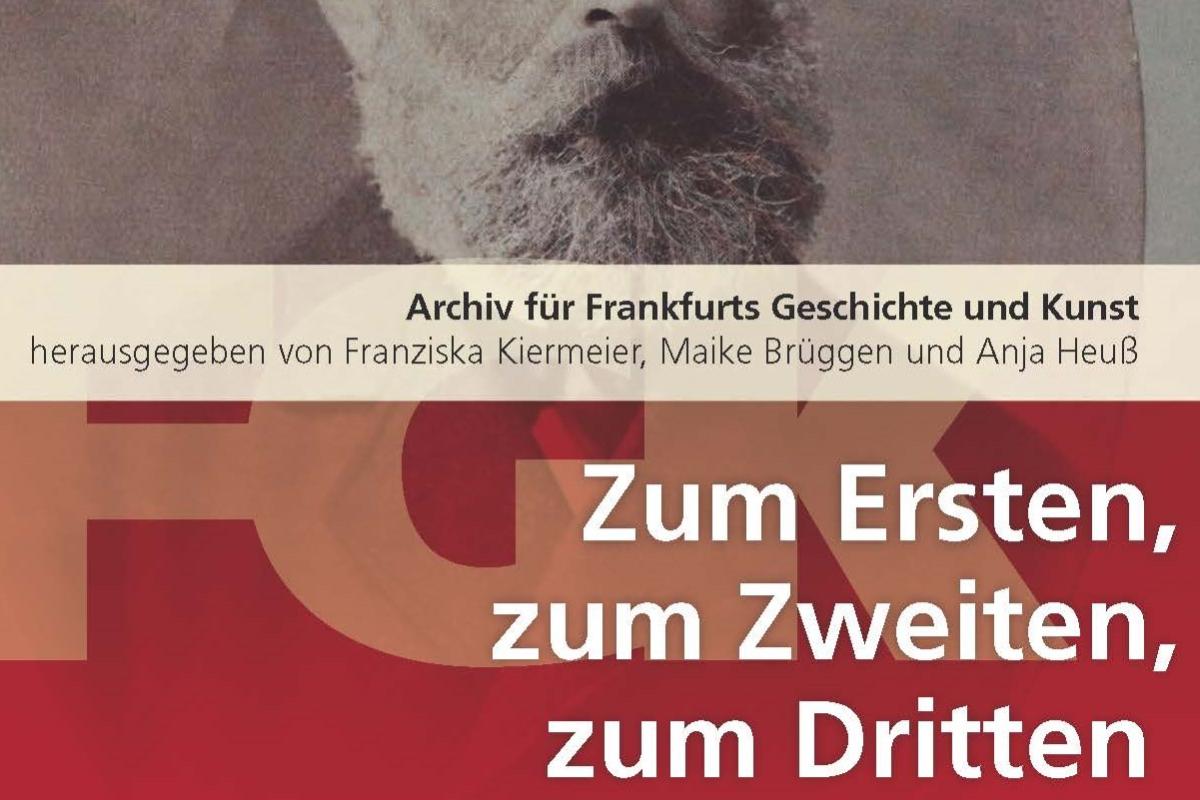A book on the history of the Frankfurt auction house Rudolf Bangel is to be published shortly. Research has been carried out into the history of the company for the first time, through a two-year project conducted by provenance researchers Dr. Maike Brüggen and Dr. Anja Heuß, the author of this blog post. The basis for the research was a collection of more than 850 Bangel auction catalogues which were made available by the long-established Galerie J.P. Schneider in Frankfurt. The catalogues contain notes on consignors, buyers and prices, so they are so-called “hand copies”, i.e. the auction house’s own copies that were annotated before and during the actual auctions. In the course of the project, a further 135 hand copies were discovered in Städel Museum library. One surprising find emerged shortly before the end of the project when Anja Heuß learned of the existence of part of an estate left by Frankfurt art dealer Wilhelm Ettle. Now in the Institute for the History of Frankfurt (ISG), this partial estate contains another 14 annotated hand copies.
Some provenance researchers may already be familiar with these valuable catalogues, as the owner of Galerie J.P. Schneider jr., Dr. Christoph Andreas, has been willing to provide information on individual provenances based on these sources for years. For the first time, the research project did not search these catalogues for individual items but drew on the inventory as a whole to develop a number of thematic constellations, thereby enabling a profile to be compiled of the art dealership. Since the Rudolf Bangel auction house was forced to close in 1929 as a result of the Great Depression, it has not been the focus of Nazi provenance research to date, but it is of considerable interest in terms of both provenance research on Nazi looting of cultural property and also research on colonial contexts. Among other things, the annotations show which Jewish collectors acquired which works of art – items that were taken away from them a few years later as a result of National Socialist persecution.
The forthcoming publication Zum Ersten, zum Zweiten, zum Dritten. Das Auktionshaus Rudolf Bangel in Frankfurt am Main 1873-1929 [Going once, going twice, sold. Rudolf Bangel Auction House in Frankfurt am Main 1873-1929] in the series Archiv für Frankfurts Geschichte und Kunst (AfGK) is the first time the history and significance of the Frankfurt auction house Rudolf Bangel has been presented on this scale. Sponsored by the Frankfurt historical society Gesellschaft für Frankfurter Geschichte e. V., this is now the third volume in the series on the subject of the art trade/art collecting in Frankfurt and the surrounding region. The editors of the third volume are Franziska Kiermeier, Maike Brüggen and Anja Heuß. It was possible to gain the services of provenance researchers Laura Vollmers (Frankfurt/Karlsruhe), Shammua Maria Mohr (Darmstadt) and ethnologist Frauke Gathof (Berlin) as additional authors.
The Bangel auction house was a family business in which three generations of the family were actively involved. The company held more than 1,100 auctions between 1873 and 1929, offering a wide range of items, including paintings, drawings, arts and crafts items and furniture. But the five authors also highlight specific areas in which the auction house specialised. For example, several artists’ estates were auctioned, such as those of Adolf Schreyer (1828-1899) and Eugen Bracht (1842-1921). In the 1920s the company auctioned off a considerable number of items from museums; these provenances were sometimes declared but in some cases they were concealed at the request of the museums. Bangel was even one of the leading auction houses in the German Empire for East Asian artefacts. The objects offered for auction from colonies such as the Belgian Congo, German East Africa and German South West Africa are also noteworthy. Particularly striking is the range of weapons from the Congo, most of which previously belonged to former Belgian colonial officials. Bangel was well networked in Germany and Europe and was a key defining influence in connection with numerous collections in Frankfurt and the surrounding region. The annotations provide a wealth of evidence of the purchasing behaviour and tastes of the middle classes, but they also yield information about the intermediary trade, since players from beyond the region are also represented, including the art dealers Stern, Paffrath, Gurlitt, Heinemann and Goudstikker.
The authors Anja Heuß and Maike Brüggen present the history of the auction house from 1873 to 1929 in three essays. Maike Brüggen focuses on the founding of the museum, the exhibitions at the end of the 19th century and the auctions held during the First World War to the benefit of war victims, while Anja Heuß describes the company’s activities from the end of the First World War up until its bankruptcy in the year 1929. In addition to the sales from museum collections and the internationally acclaimed auction of the estate of Kronberg painter Adolf Schreyer, the role of the Bangel auction house at the Frankfurt Art Fair is also highlighted. The Frankfurt Art Fair held three auctions between 1919 and 1921 at which the works offered included those from the Alfred Hess Collection, Erfurt.
The company went bankrupt in 1929 after the owners were sentenced to prison for the embezzlement of proceeds. The book also briefly traces the subsequent biographies of the last owners during the National Socialist era.
This historical outline is followed by thematic contributions that delve into further aspects: Shammua Maria Mohr analyses the auction of Eugen Bracht’s estate, Laura Vollmers focuses on Bangel’s sale of East Asian artefacts, and Frauke Gathof sheds light on business relations between the Rudolf Bangel auction house and Frankfurt’s Völkermuseum (today: Weltkulturenmuseum).
Save the date – symposium on the Rudolf Bangel auction house: On 3 July 2024, a symposium on the Rudolf Bangel auction house will take place at the Institute for the History of Frankfurt in Frankfurt. The editors have asked selected speakers to expand and supplement the topics already covered in the publication. As a recognised expert on the Alfred Hess Collection, Anna Baumberger will present the works from this collection that were offered for auction at the Frankfurt Art Fair. Kathrin Kleibl, until recently editor of the LostLift database in Bremen, will take a painting by Gustave Courbet as an example to show how an annotation dating back to the 1920s can be used to justify a restitution claim today. Further contributions by Maria Effinger/Heidelberg University Library and Nadine Oberste-Hetbleck and Lucia Seiß/Central Archive for German and International Art Market Studies offer a look at how these special sources might be used, also examining their future potential in terms of digitisation and research.
Publication (release June 2024): Zum Ersten, zum Zweiten, zum Dritten. Das Auktionshaus Rudolf Bangel in Frankfurt am Main 1873-1929, Archiv für Frankfurts Geschichte und Kunst der Gesellschaft für Frankfurter Geschichte e.V. in Verbindung mit dem Institut für Stadtgeschichte / Volume 81, edited by Franziska Kiermeier, Maike Brüggen and Anja Heuß, Frankfurt am Main 2024
The project was funded by:
Gesellschaft für Frankfurter Geschichte e.V. Kunsthandlung J. P. Schneider jr., Frankfurt am Main Stiftung Polytechnische Gesellschaft, Frankfurt am Main
Adolf and Luisa-Haeuser Stiftung für Kunst und Kulturpflege, Hattersheim am Main Auktionshaus Döbritz, Frankfurt am Main
Dr. Anja Heuß is a provenance researcher at the Freies Deutsches Hochstift/Frankfurt Goethe Museum.


